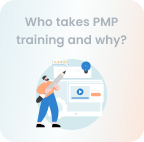







 10 Sep 2024
10 Sep 2024



What is a Chief Product Officer, and why does their role increasingly shape modern tech organizations? As companies battle for customer attention and innovation leadership, one role has quietly risen to the top table: the Chief Product Officer. The CPO is no longer just a senior product manager; they are the strategic architect of a company’s product vision, execution, and success.
From aligning products with business goals to championing user experiences, the CPO’s influence spans departments and disciplines. In this blog, we break down the evolving nature of the CPO role, the skills needed to thrive in it, how it differs from other C-suite positions, and what kind of salary you can expect.
Table of Contents
1) What is a Chief Product Officer (CPO)?
2) Key Roles and Responsibilities of a Chief Product Officer
3) Essential Skills for a Chief Product Officer
4) Which Metrics do CPOs Use to Evaluate Product Success?
5) Chief Product Officer (CPO) vs Chief Technology Officer (CTO)
6) Challenges for Chief Product Officers and Solutions
7) Average Salary for Chief Product Officers
8) How to Become a Chief Product Officer?
9) Conclusion
Chief Product Officer is the person in charge of the whole product strategy and its implementation within a company. Positioned at the junction of business, technology, and user experience, the CPO ensures that products of a company meet market demands and corporate goals.
Often sitting alongside the CEO, CPO, and CTO, the CPO instructs cross-functional teams, manages the product portfolio, and influences organizational development by means of product performance in product-led firms.
The title may be different. Some companies may use titles such as "Head of Product" or "VP of Product". The CPO sits at the executive table in companies where the product is a main driver of growth, influencing high-level strategic decisions and creating a product-driven culture across the company.
The role of a CPO is multifaceted, demanding both strategic foresight and hands-on leadership. Let’s look at the key responsibilities that define their day-to-day impact.
The CPO sets a long-term product vision and ensures it aligns with the company’s mission. They analyze market trends, competitive landscapes, and customer feedback to ensure that products remain relevant and competitive. This includes defining product roadmaps, prioritizing initiatives, and validating market needs.
They also work to identify white space opportunities and areas in the market where customer needs are not being fully met and develop strategies to enter or dominate those niches.
CPOs lead Product Managers, designers, UX specialists, and often engineering partners. They create clarity across teams by setting goals, aligning priorities, and ensuring smooth communication. Cross-functional collaboration with marketing, sales, and support is vital to ensure products are built, launched, and scaled effectively.
As leaders, CPOs are responsible for creating a high-performing culture, mentoring rising product leaders, and implementing systems and frameworks like Objectives and Key Results (OKR) to maintain alignment and measure outcomes.
Customer insight is at the heart of a CPO’s decision-making. From running surveys and user interviews to leveraging behavioral analytics, the CPO champions customer needs throughout the development cycle. They help build products that not only meet but exceed user expectations.
They also invest in voice-of-the-customer programs and usability testing to continuously improve product experience, while working closely with UX teams to deliver intuitive and delightful interfaces.
CPOs lean heavily on data to validate assumptions, assess product performance, and drive prioritization. From usage metrics and churn rates to customer satisfaction and feature adoption, data informs every phase of the product lifecycle.
Data is not just about measuring success; it's about uncovering pain points, identifying opportunities for growth, and preventing costly missteps by making informed trade-offs.
Driving innovation is a core function. Whether it’s pioneering new features or entering new markets, CPOs foster a culture of continuous improvement. They also manage the entire product lifecycle, from conception and launch to updates, support, and sunset strategies.
Innovation also includes adopting new technologies such as AI, automation, and machine learning to create smarter, more responsive products. The CPO ensures that the product vision remains ahead of the curve.
The CPO monitors product profitability, unit economics, and ROI. They balance investment in innovation with cost efficiency and revenue impact. Working closely with finance teams, they ensure products meet growth and profitability goals.
They also track contribution margins, set pricing strategies, and analyze customer acquisition costs versus lifetime value to ensure sustainable product growth.
Kickstart your project management journey with PMI Project Management Ready training.
Beyond responsibilities, a CPO must master a diverse skill set to lead with confidence and clarity. These essential skills form the backbone of effective product leadership.

Excellent communication helps the CPO articulate vision, drive alignment, and inspire teams. Strong leadership is essential to navigate cross-functional challenges, coach managers, and foster a culture of accountability. They must also manage conflict, build consensus across departments, and present product strategies effectively to boards and investors.
Empathy for the customer allows CPOs to spot unmet needs and craft impactful solutions. This orientation influences product design, prioritization, and marketing. They must be fluent in the language of the customer and translate feedback into clear product requirements that the team can execute.
Data fluency allows CPOs to make objective, timely decisions. They must balance intuition with evidence and know when to pivot or persevere. Strategic risk-taking is often part of the job. Strong problem-solving skills, the ability to evaluate trade-offs quickly, and the courage to make bold decisions even in uncertainty are key traits.
While not necessarily coders, successful CPOs possess enough technical knowledge to collaborate effectively with engineers and tech leads. Understanding architecture, scalability, and system limitations enhances product feasibility. Their ability to speak the same language as the engineering team helps avoid miscommunication and ensures smoother delivery.
CPOs track a blend of user behavior, as well as financial and operational metrics. These typically include:
a) Customer Satisfaction (CSAT) and Net Promoter Score (NPS)
b) Monthly Active Users (MAUs) and Daily Active Users (DAUs)
c) Customer Retention and Churn Rates
d) Revenue per User and Customer Lifetime Value (CLV)
e) Feature Adoption and Usage Rates
f) Product Development Cycle Time
g) Time to Value (TTV) and Conversion Rates
h) Support Ticket Volume and Resolution Time
These insights help identify what’s working, where users are dropping off, and where value can be increased.
Confidently manage project risks. Prepare now with PMI-RMP training.
Although both roles sit at the executive level and may overlap in some companies, they serve different functions:
a) CPOs focus on what products to build and why
b) CTOs focus on how to build those products and with what technologies
While the CPO ensures product-market fit and customer delight, the CTO oversees system architecture, infrastructure, and engineering performance. Collaboration between the two is crucial, especially in digital-first companies.

Some organizations blend these roles in smaller teams, but as the business scales, having separate yet collaborative functions is vital for specialization and execution.
Even the most seasoned CPOs face hurdles in maintaining product excellence and team alignment. Here are some common challenges and practical ways to overcome them.
Managing differing priorities from marketing, sales, and engineering requires diplomacy and alignment.
Solution: Clear communication, stakeholder workshops, and transparent prioritization frameworks.
Tech landscapes shift quickly, and keeping products competitive is a constant challenge. Falling behind can result in missed opportunities and a loss of market relevance.
Solution: Continuous learning, market research, and encouraging a culture of experimentation.
As organizations grow, so do product teams, which leads to coordination challenges. Misalignment across teams can slow delivery and dilute product vision.
Solution: Establishing clear ownership, robust onboarding, and frameworks like OKRs.
Vanity metrics can mislead decisions. Without the right insights, teams may optimise for the wrong outcomes.
Solution: Focus on actionable metrics that align with strategic goals.
Mergers, leadership changes, or restructures can disrupt product priorities. Such changes often create uncertainty and shift expectations overnight.
Solution: Stay focused on long-term product vision while remaining agile to adapt short-term tactics.
Align projects with strategy. Gain our PfMP Certification and drive enterprise-wide value.
CPO salaries vary significantly by geography, industry, and company size. In the UK, average base salaries range between £130,000 to £200,000, often accompanied by equity, bonuses, and benefits. In the US, it’s not uncommon for CPOs to earn $200,000 to $350,000, especially in fast-growing startups or tech unicorns.
Beyond base pay, total compensation often includes:
a) Stock options or equity
b) Performance bonuses
c) Executive perks and benefits packages
d) Long-term incentives like Restricted Stock Units (RSU)
Salaries are influenced by factors like:
a) Number of direct reports and span of control
b) Size of product portfolio
c) Company revenue stage (startup vs enterprise)
d) Public vs private company status
Becoming a Chief Product Officer is not a linear journey. It typically requires a blend of product management experience, strategic acumen, and leadership maturity. Here’s how aspiring professionals can work their way up to this executive role:

1) Start with Product Roles: Most CPOs begin their careers as Product Analysts, Associate Product Managers, or UX Researchers. Building foundational experience in product development is essential to understanding user needs and cross-functional collaboration.
2) Climb the Product Ladder: Progressing through roles like Product Manager, Senior Product Manager, and Director of Product allows professionals to gain experience leading teams, launching products, and driving roadmaps.
3) Gain Cross-functional Exposure: CPOs work closely with marketing, engineering, sales, finance, and customer success. Gaining exposure to these functions through cross-functional projects helps build the broader business understanding needed at the executive level.
4) Focus on Leadership and Vision: Developing strong communication skills, mentoring others, and learning to set vision and strategy are key. Many CPOs pursue MBAs or executive courses to build strategic thinking.
5) Stay Data-driven and Customer-centric: A successful CPO must excel at using data to guide decisions while staying empathetic to customer pain points. Practice these traits at every stage of your career.
6) Build a Personal Brand in the Product Community: Speaking at conferences, publishing thought leadership and mentoring other Product Managers helps build credibility. Many CPOs are active voices in the product management ecosystem.
7) Seek Roles in Product-led Companies: Joining organizations where the product is central to growth increases your chances of progressing to the CPO level. Companies that value innovation and experimentation are often where top product leaders thrive.
The Chief Product Officer plays a central role in modern companies, blending strategy, execution, and innovation. From managing product portfolios to aligning with business goals, the CPO drives growth through product excellence. As companies embrace product-led growth models, the CPO’s influence only grows stronger.
Boost project success with globally recognized PMP Certification. Start your training today.






© Copyright 2025. All rights reserved. Contact: PMP® TRAINING ACADEMY.


